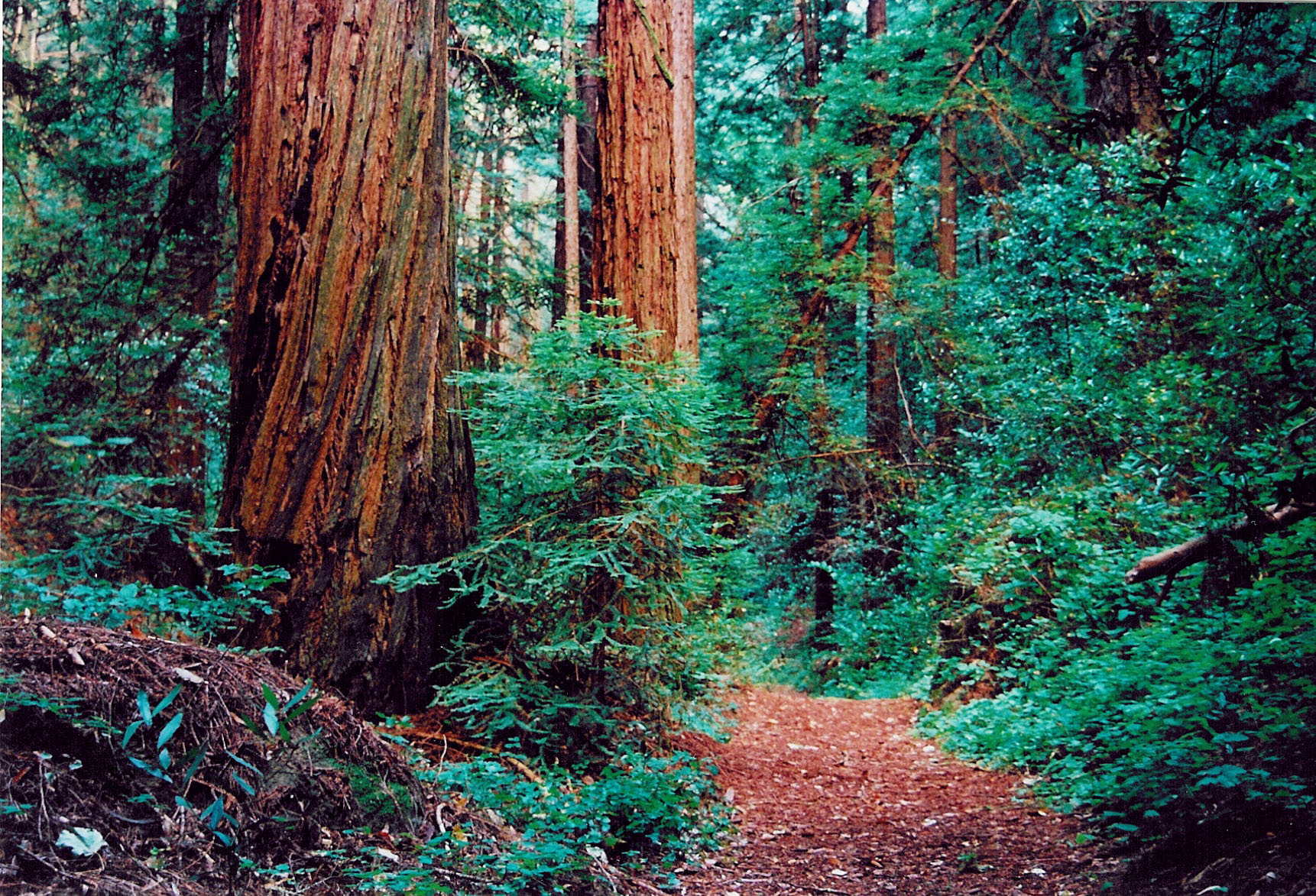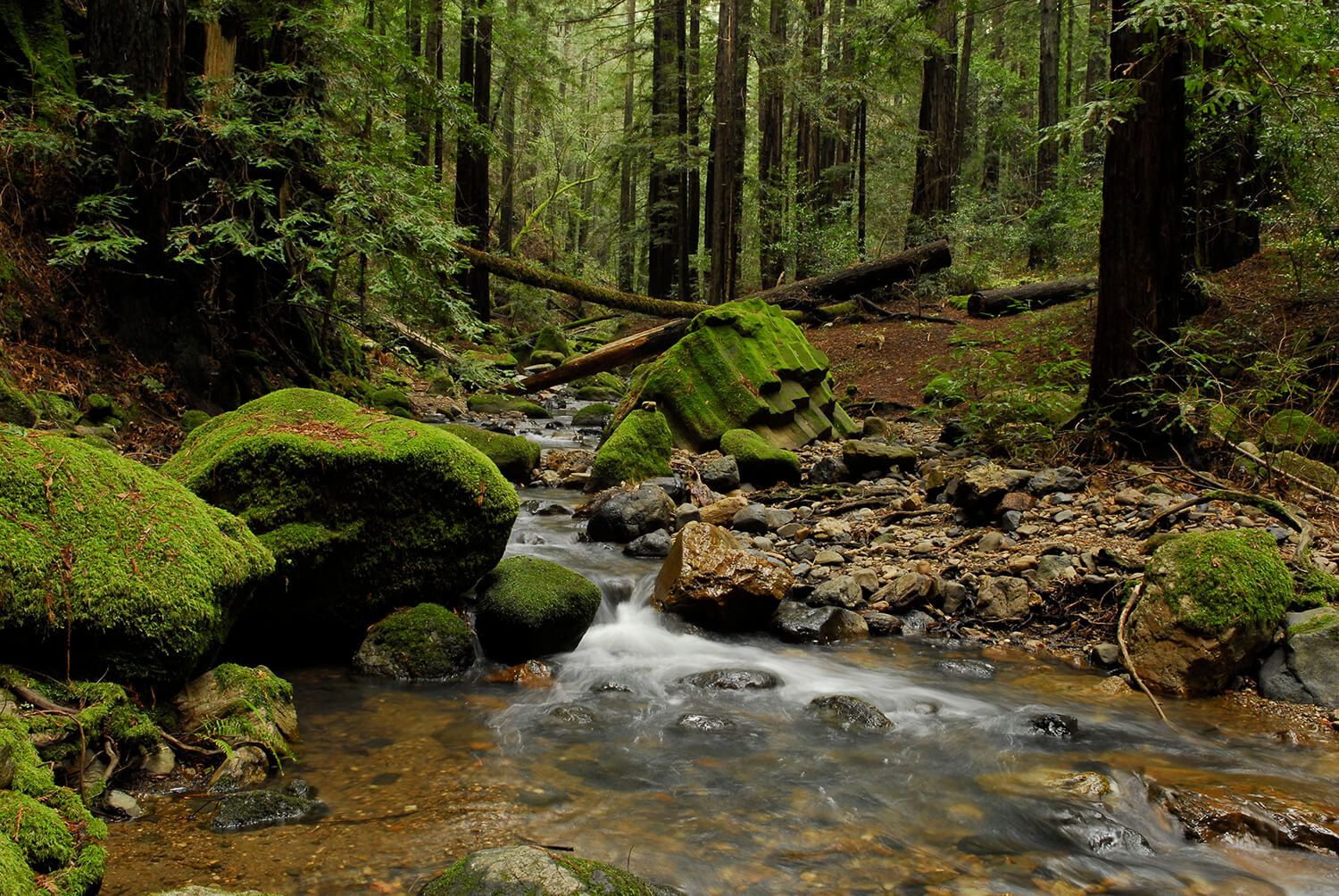Archer Taylor Preserve
Located on the west side of Napa Valley, the Archer Taylor Preserve consists of 399 acres managed by the Land Trust of Napa County. The Preserve is a permanently protected wildlife habitat and contains one of the largest redwood stands in Napa County. The property includes a year-round creek and over 240 recorded species of native plants, including several that are threatened or endangered. Although the property was logged along the creek in the 1890s, the land has been largely untouched by humans ever since. The Land Trust manages the Preserve in conjunction with a group of dedicated volunteers for the protection and preservation of this beautiful property. The Preserve is open to the public through guided hikes scheduled by the Land Trust.
Preserve Access:
Our schedule of guided hikes and workdays with Land Trust staff and volunteers on protected land all around Napa County, including Archer Taylor preserve, can be found on our hikes page.
For information on public access to Archer Taylor preserve, including a list of dates for orientation sessions, please visit the Land Trust Public Access page.
Commercial Use is prohibited on all LTNC properties.
Natural History
Geology – The Preserve is in a huge volcanic field, the Sonoma Volcanic Formation. Geologists judge it to be between 3 and 7 million years old – rather young in geologic time! The Sonoma volcanics cover much of western Napa County, including mountains on both sides of Napa Valley, the eastern quarter of Sonoma County, and the southwest quarter of Lake County – an area of about 350 square miles. Huge amounts of lava and ash were deposited over this area. Geologists have not found volcanoes in the area and hypothesize instead that scattered fractures in the Earth’s crust may have been the source. Volcanic deposits on and near the Preserve are mainly lava and ash. Ash forms into soft white layers called “tuff.” Curious structures called “columnar lava” or “volcanic postpiles” occur on the Preserve, visible at the swimming hole near the bridge and high up the creek. Like those of Devil’s Postpile east of Yosemite, they consist of large columns of rock tightly joined together. In the creek bed of the Preserve, some large columnar fragments can be found, showing these 5 or 6-sided posts clearly.
Plants – The redwood trees were logged in the 1890s. In several dozen places, sawed-off stumps can be seen, often ringed with new trees sprouting from the roots or bases of the stumps. Due to logging, this forest is not old-growth redwood, but some very old trees can be seen. The other tall conifer found here is Douglas-fir, identified by its dark, thickly furrowed bark and long blunt single needles. Fires occurred on the Preserve in 1906, 1945, 1996 and 2017. All four burned from the Sonoma side over the ridge to Napa County, varying in their extent and damage. Fires that burn through the undergrowth protect the land from more damaging crown fires. Some of the redwood trees show black scars on their bases resulting from these fires. The bark of the redwood protects the tree from the heat and damage of fire. Ferns abound in the redwoods. Sword Fern is evergreen and often grows in large clumps. California Polypody, Polypodium californicum is a small winter-growing species with tender lance-shaped leaves or “fronds.” Bracken fern, a summer plant, has fronds far larger than Polypody’s. Many other interesting native plants grow here, including wild strawberries and huckleberries. The latter plant is closely related to the domestic blueberry. Huckleberries on the Preserve bear fruit when they receive enough sunlight, but most live in the creek where it is too dark. Above the creek and higher up live the manzanita and madrone trees. Several species of oak appear on the Preserve. The California Black Oak has large, deeply cleft leaves with bristle-tipped lobes. Shrub Oak is a shrub rather than a tree. California bay trees are prolific in the Douglas-fir and oak woods. Unlike oaks, California bay trees are known for their long and strongly-scented lance-shaped leaves. These leaves may be used in cooking as a substitute for laurel leaves. There are a variety of wildflowers that bloom on the Preserve, including Western Heart’s Ease or Two-Eyed Violet, whose white flowers have yellow bases and two purple “eye-spots,” and Trillium, a plant with three leaves per stem and white or pink three-part upright flowers.
Wildlife – Animals on the Preserve include deer, fox, mountain lion, raccoon, skunk, gray squirrel, and an occasional bear. Red-tailed hawks are often visible. Other bird species abound in the forest, including the large pileated woodpecker, with a red top-knot and piercing call, “kee-kee-kee-kee.” Sometimes they can be heard “drumming” loudly on tree trunks. Spotted owls, larger barn owls, and tiny pygmy owls are also found here. Although rarely seen, they can often be heard calling in the forest. Snakes, lizards, frogs and salamanders are also present, including the western newt, a kind of salamander with a dark orange belly that likes moist places. Trout can be seen in the larger pools, and minnows are almost everywhere in the creek. Steelhead trout do not come onto the Preserve, but they were often seen in great numbers downstream where the creek can be seen next to the county road.
Cultural History
The Archer Taylor Preserve was purchased in 1945 by Drs. Archer and Hasseltine Byrd Taylor, both of whom taught for many years at the University of California Berkeley. In 1950, the Taylors began building the stone house now occupied by the caretakers from materials on the property – quite an accomplishment considering that Hasseltine Taylor often said the most vigorous thing Archer Taylor did before they began building was typewriting! They occupied the house in the summer of 1956 with their two daughters, Constance and Ann, and lived there summers until moving in permanently in 1969. Archer Taylor died in 1973, and Hasseltine in 1993. Constance and Ann Taylor Schwing loved the land as children and were determined to protect it forever. Early members of the Land Trust of Napa County, they donated the first 80 acres to the Land Trust in 1993. Ann continues to volunteer at the Preserve with her husband every Saturday morning to help maintain and responsibly manage the land.
Conservation
Managing a wildlife preserve requires constant vigilance and care. Invasive plant species are brought in via hikers’ shoes, vehicle tires, wind, birds and other wildlife and water. Two of the biggest invasive plant problems on the Preserve are periwinkle, Vinca major, and Geranium purpureum. Vinca is an aggressive perennial vine most commonly found in shaded riparian and disturbed areas. The plant is characterized by dark green, glossy, opposite leaves and attractive purple flowers that bloom in late spring. Archer Taylor Preserve is removing Vinca by hand-pulling in riparian areas and a combination of mowing and herbicide treatment in higher ground. Vinca spreads by arching stolons that root at the tips and by vigorous underground growth of stolons. When pulling Vinca by hand, it is essential to remove all of the underground stem fragments and bag or remove them from the site. Geranium purpureum is an annual that has invaded the trails and moist shaded areas of the Archer Taylor Preserve. Given the opportunity, it could eventually dominate the forest ground cover, displacing native plants. It blooms from spring to fall. Each flower is capable of projecting seeds 15 to 20 feet away, and seeds stay viable in the soil for up to 6 years. Preserve volunteers are hand-pulling the plants at the edges of the population and along roads and trails where seeds may be picked up and spread.
A team of volunteers meets the second Saturday of each month to work on these and other Preserve management projects. To sign up visit our hikes page or email ATPHiker@napalandtrust.org for more information.



